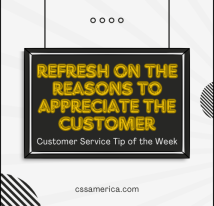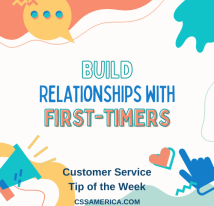
According to a recent times.com article, there are several top reasons why customers get frustrated with customer service. Tied for the biggest frustration is dealing with rude customer service representatives. Survey results noted that 75% of customers are “highly annoyed by rude or condescending employees.”
While many of us feel that we’re generally pleasant people, even the most pleasant individuals can run the risk of coming off as rude or condescending. This perception by others can come from the tone of voice, the actual words used, or body language in face-to-face situations.
In order to ensure that the answer you give or solution provided does not reflect negatively on you, here are several things you can do to avoid being perceived as rude or condescending:
- Watch Subtle (and sometimes not-so-subtle) Tone Issues – Avoid the “huffs” or frustrated sighs, and don’t let your booming voice dominate them.
- Avoid Using “you” if Discussing Blame – Don’t do this: “If you would have just done ABC, this wouldn’t have been an issue.”
- Convey Some Empathy – There’s a difference between a coldly delivered “That’s against policy” and an empathetic “Unfortunately we’re not able to do ABC for this reason, but let’s talk about what we CAN do for you.”
- Effectively Move to the Hold or Transfer – Don’t put someone on hold or transfer unless you first ask and explain why you’re making the move.
- Consider the Body Language – Avoid the eye rolls, folded arms, smirks, a lack of focus on the customer, and – ugh – putting your hand up in the “stop” position.
- Don’t Rush the Customer – This is by far the most frequent cause of perceived rudeness – even when customers are dealing with kind customer service representatives. Lacking patience, talking quickly, giving short answers, interrupting the other person, and not confirming that the customer got their need met are all drivers of that perception of a rude employee.
Avoid rudeness – the customer’s hot button with customer service.
Signup for FREE Tips! Contact Us More Resources for You Visit Our Home Page























